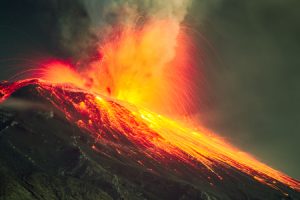 Volcanoes have earned a reputation for destroying things with their hot molten lava. When a volcano erupts, it’ll usually result in the destruction of everything from trees and crops to homes and, in some situations, even entire neighborhoods. But in addition to wreaking havoc and destroying just about everything that gets in its way, volcanoes also create something when they erupt. The lava that spews out of them forms volcanic glass when everything is all said and done.
Volcanoes have earned a reputation for destroying things with their hot molten lava. When a volcano erupts, it’ll usually result in the destruction of everything from trees and crops to homes and, in some situations, even entire neighborhoods. But in addition to wreaking havoc and destroying just about everything that gets in its way, volcanoes also create something when they erupt. The lava that spews out of them forms volcanic glass when everything is all said and done.
How does this happen?
Well, when a volcano erupts and sends lava everywhere, the lava comes into contact with certain things that will cause it to cool down very quickly. Water, for example, will cause the temperature of lava to come down dramatically in a short period of time when the two touch. When this happens, a chemical reaction occurs that ends with the lava transforming into an igneous rock that is uncrystallized in the same way glass is.
Volcanic glass can present itself in a variety of different forms.
Most commonly, you’ll see lava turn into obsidian, which is a kind of igneous rock that appears very shiny and black. Obsidian is a brittle rock and will break rather easily. But that falls right in line with what you might expect from volcanic glass. Despite the initial strength of lava, it’s actually quite fragile once it converts over into glass form. Pumice is another common type of volcanic rock that you’ll typically find at the site of a volcanic eruption.
It’s amazing to hear about how a volcano can make glass simply by hot lava shooting out everywhere. It’s also incredible to hear about the different kinds of glass that ProCurve Glass Design, Inc. can make for a variety of purposes. If you need glass for a marine, automotive, rail, or heavy equipment application, call us at 215-441-9101 today to find out about the types of glass we can offer you!
